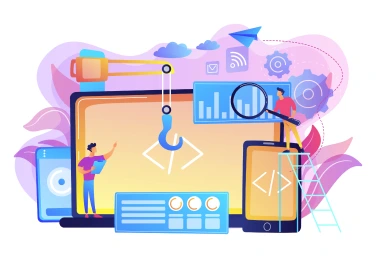
Website development is a crucial process in today’s digital world, where having an online presence is essential for businesses, organizations, and individuals. From brainstorming the initial idea to the final website launch, the process requires a combination of creativity, technical skills, and strategic planning. In this ultimate guide, we will walk you through the key stages of website development, ensuring that your project is both effective and successful.
1. Conceptualization and Planning
The first step in website development is conceptualization. This involves defining the purpose of the website, the target audience, and the key features it should have. Are you building an e-commerce site, a blog, or a corporate website? Clarifying these elements will guide the entire project.
Once the concept is clear, create a detailed plan. This includes defining the structure of the site, such as the number of pages, navigation flow, and essential content areas. Tools like wireframes and sitemaps can help in visualizing the layout and functionality before the actual design and development begin.
2. Design: Crafting the User Experience
With a solid plan in place, the next step is to design the user interface (UI) and user experience (UX). The design phase is where creativity comes into play. You’ll want to create a visually appealing, intuitive layout that guides users seamlessly through the website.
The design should reflect your brand’s identity and be responsive, meaning it should work well on both desktop and mobile devices. A focus on user experience ensures that visitors can navigate the site easily, find the information they need, and engage with your content or services.
3. Development: Bringing the Design to Life
Development is where the magic happens—turning static designs into functional websites. Front-end development focuses on what users see, such as animations, layouts, and interactivity, using languages like HTML, CSS, and JavaScript.
Back-end development, on the other hand, is all about the behind-the-scenes functionality. This includes database management, server configuration, and application logic, often using programming languages like PHP, Python, or Ruby.
At this stage, web developers will integrate content management systems (CMS) like WordPress, Drupal, or custom-built solutions that allow you to manage your site’s content easily.
4. Content Creation and Integration
A great website is more than just code and design; content plays a significant role. Whether it’s product descriptions, blog posts, or service details, your content should be engaging, informative, and optimized for search engines (SEO).
Content should be seamlessly integrated into the site’s layout during this phase. High-quality images, videos, and graphics can also enhance user engagement, so it’s essential to consider media assets in your content strategy.
5. Testing and Debugging
Before your website goes live, thorough testing is a must. This includes cross-browser testing to ensure that your site functions correctly on all major web browsers, as well as mobile responsiveness testing. You should also test for speed and performance, ensuring that your website loads quickly and provides a smooth user experience.
Any bugs, broken links, or technical issues should be resolved at this stage to avoid problems after launch.
6. Launch and Beyond
Finally, it’s time to launch! Once your site is ready and thoroughly tested, you can go live by deploying it to your web hosting platform. However, the work doesn’t end here. Post-launch, you’ll need to monitor your website’s performance, update content regularly, and perform maintenance to keep everything running smoothly.
Website development is a multi-step process that requires careful planning, execution, and ongoing attention. By following this guide from concept to launch, you can create a website that is visually appealing, functional, and engaging for your target audience. With the right strategy, your website can be a powerful tool for success in the digital landscape.
05 October 2024 / Digital Marketing
Consumers are interacting with brands through a variety of touchpoints — from social media and email to websites and physical stores. With this in m...
05 October 2024 / Website Development
User experience (UX) plays a critical role in the success of a website. A well-designed UX helps users navigate your site effortlessly, keeping them e...
05 October 2024 / Website Development
The decision between custom and template-based website development depends on your specific needs, goals, and resources. Here's a breakdown to help yo...


